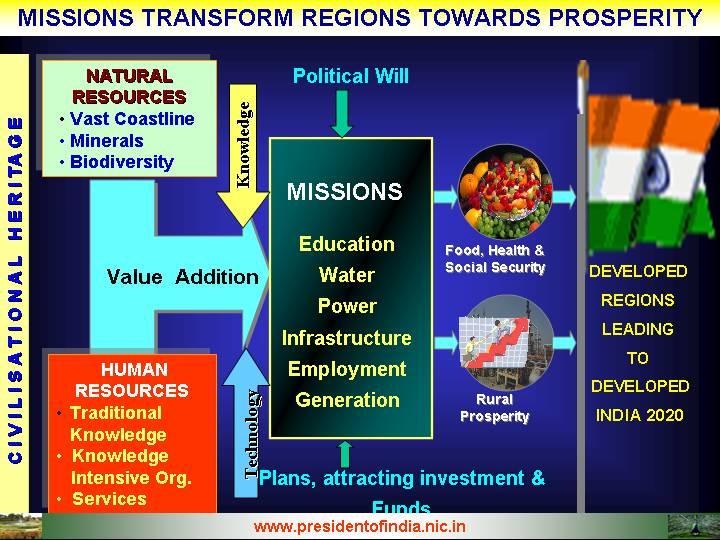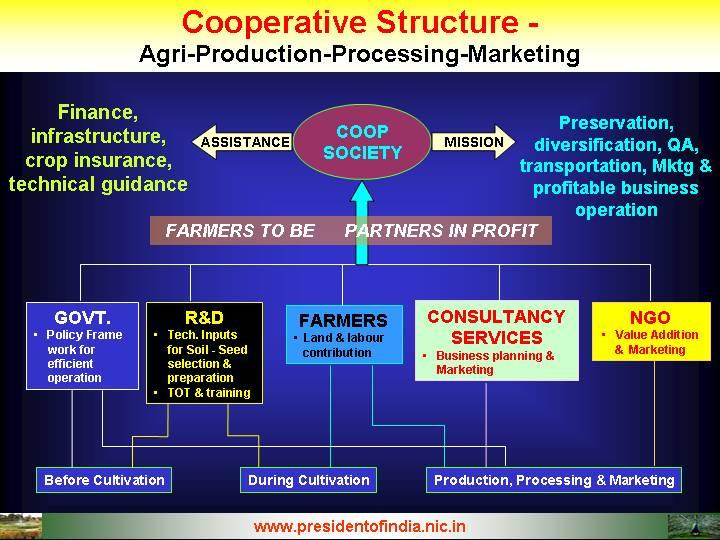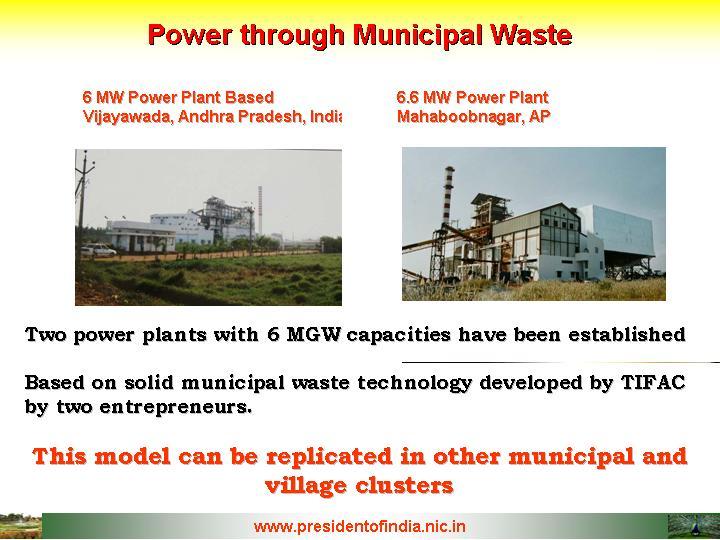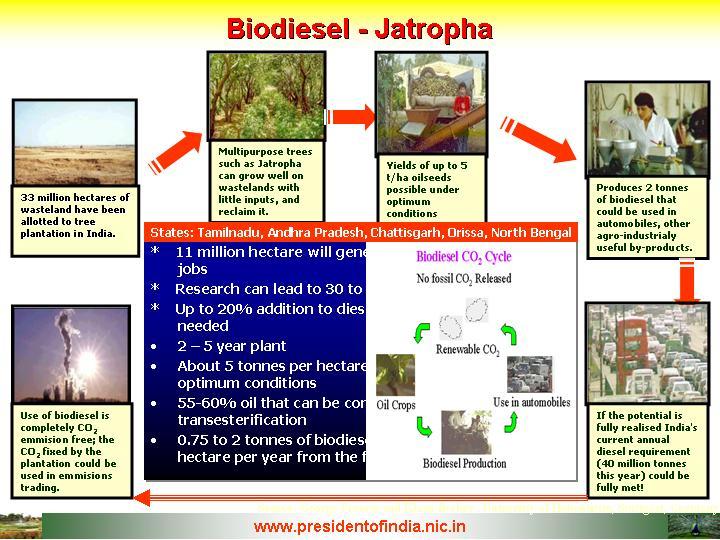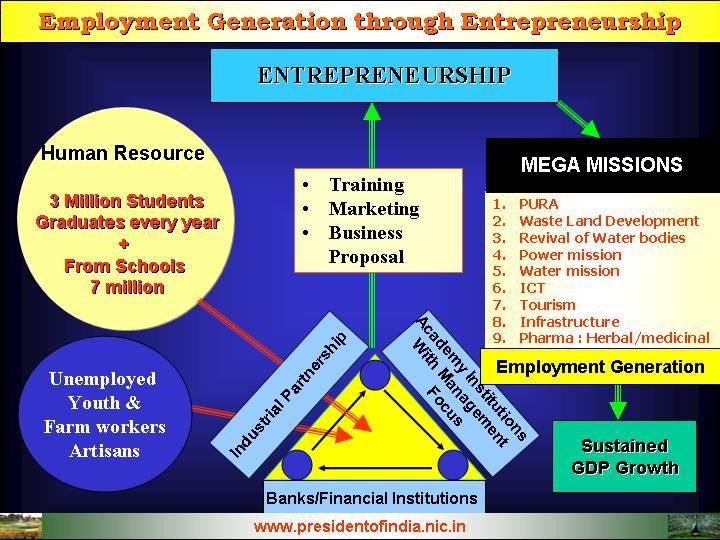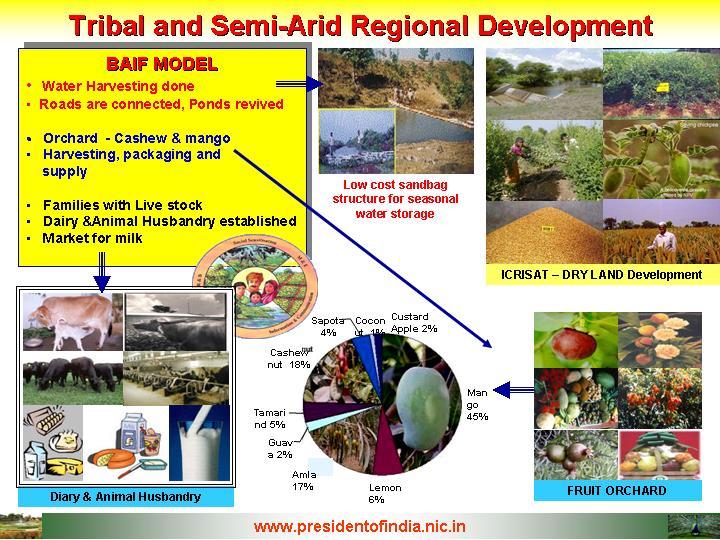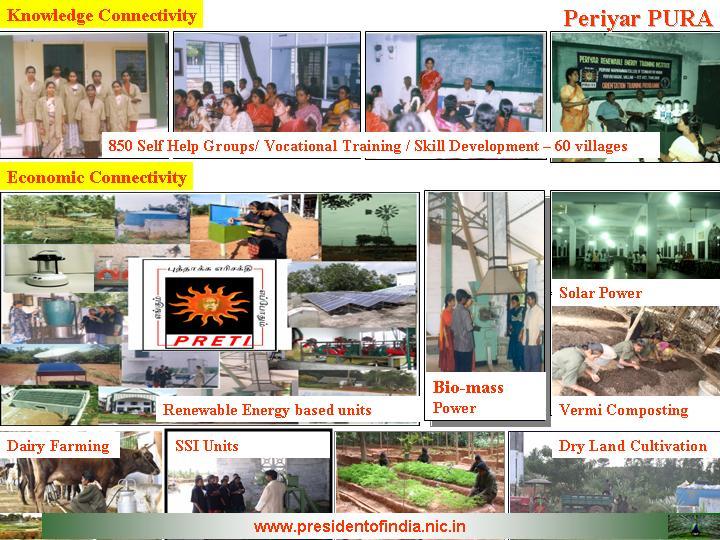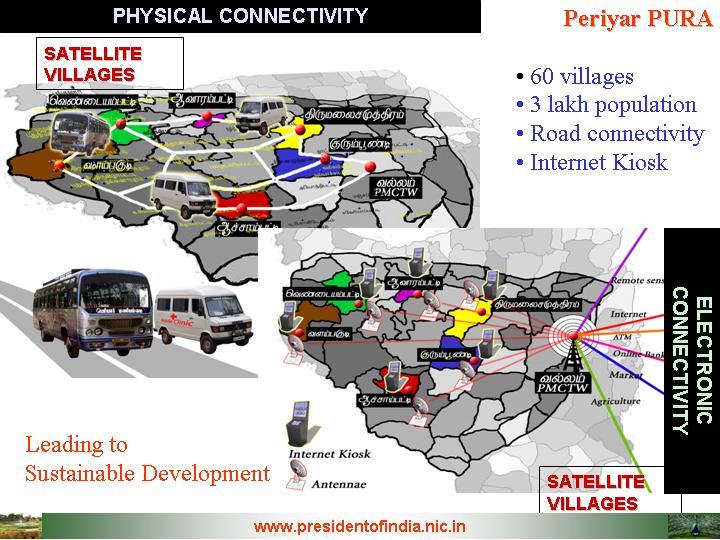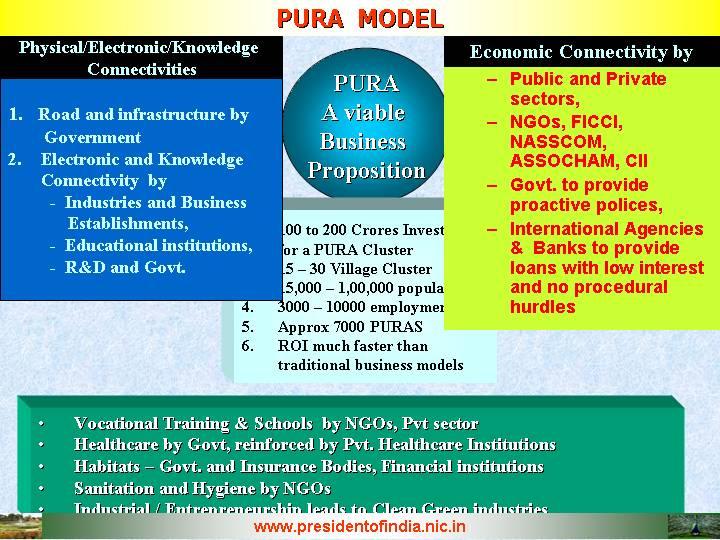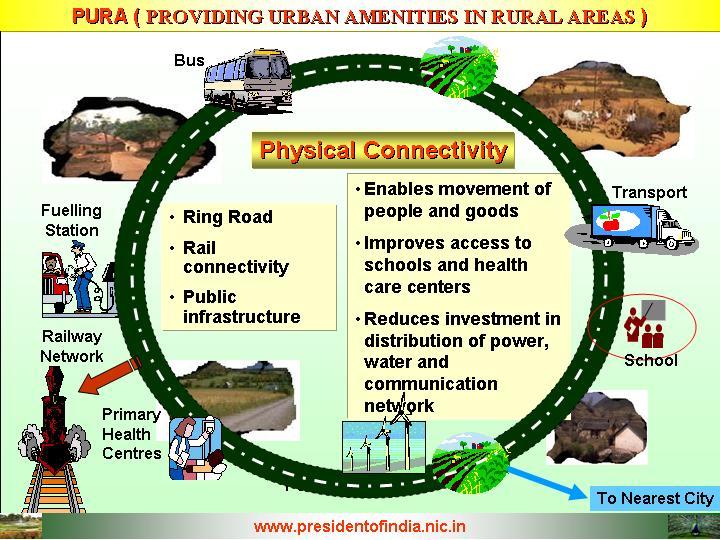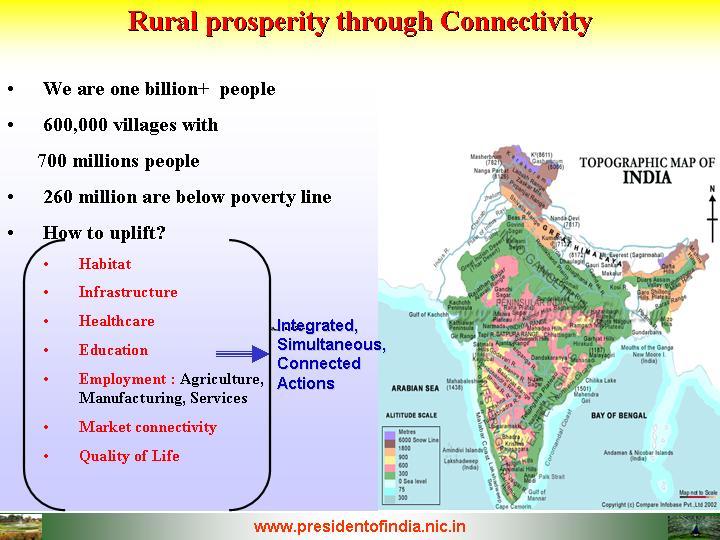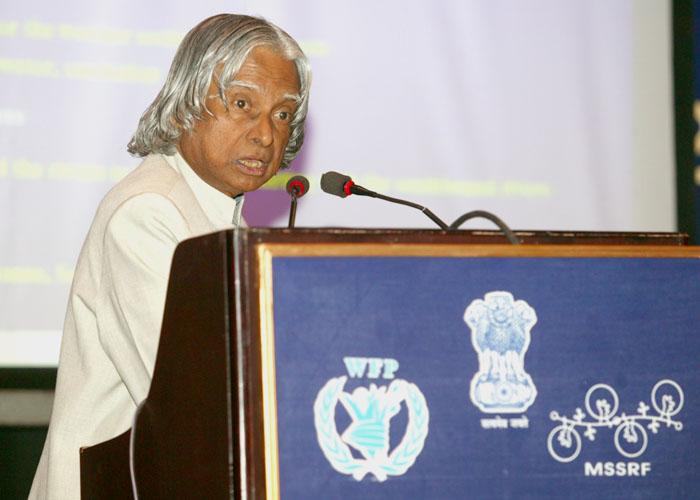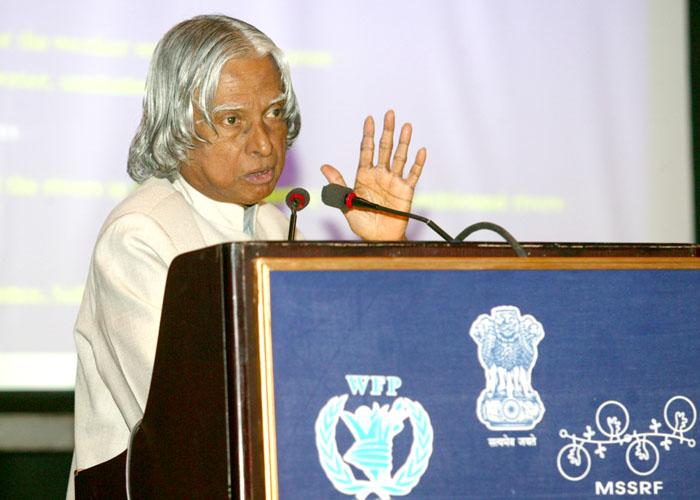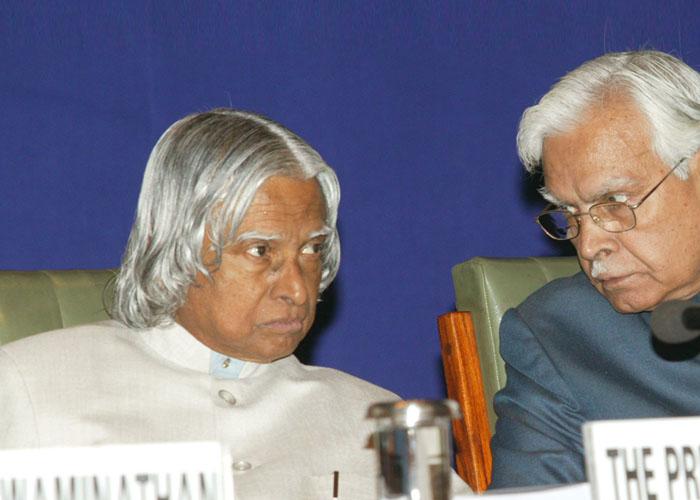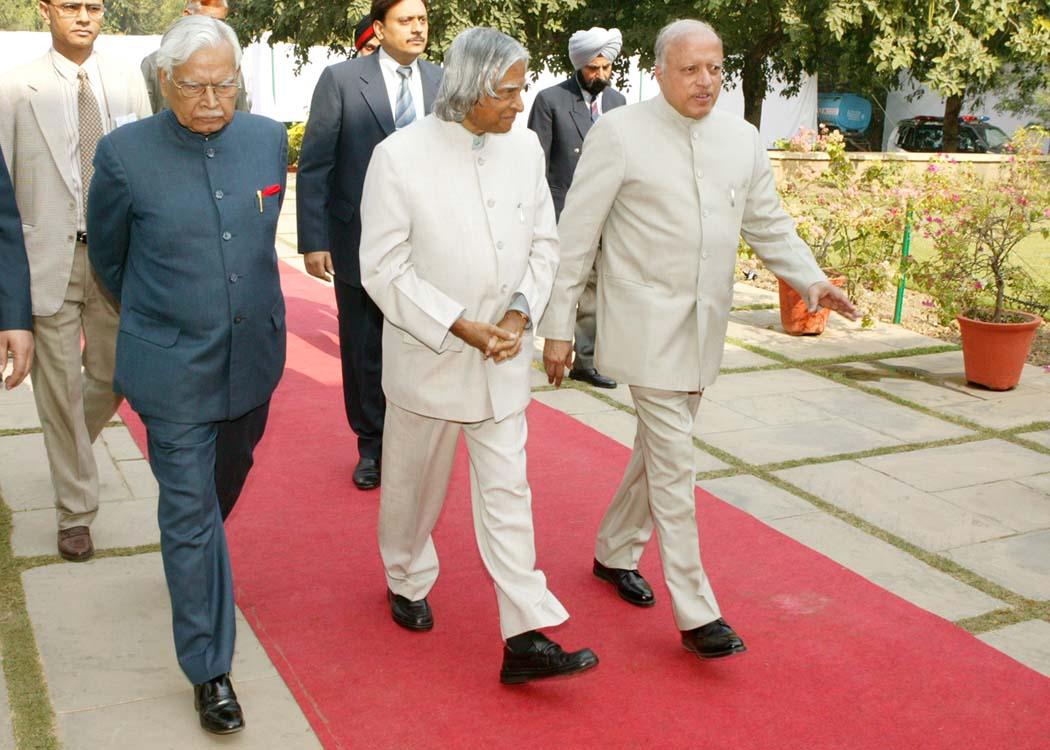Address During The Inauguration Of Symposium On Uncommon Opportunities: A Roadmap For Employment, Food & Global Security
New Delhi : 20-11-2004
Dynamics of Rural Development
I am delighted to participate in the inauguration of symposium on uncommon opportunities: A Roadmap for Employment, Food & Global security organized by the International Commission for Peace & Food. My greetings to the organizers, planners, administrators, agricultural scientists, academicians and distinguished guests.
Ambience in the Nation
"Uncommon Opportunities: An agenda for Peace and equitable development" was published in the year 1994. After a decade plus, a new situation is emerging in the national scene of 2004. In the Indian history, very rarely we have come across a situation, all at a time, an ascending economic trajectory, continuously rising foreign exchange reserve, global recognition of technological competence, energy of 540 million youth, umbilical connectivities of 20 million people of Indian origin in various parts of the planet, and the interest shown by many developed countries to invest in our engineers and scientists including setting up of new R&D centers. Also the national ?Common Minimum Programme? of the Government has six basic principles. Three out of them emphasize on economic development by ensuring growth rate of 7% to 8% annually, enhancing the welfare of the farmers and workers and unleashing the creativity of the entrepreneurs, business persons, scientists, engineers and other productive forces of the society.
Agriculture and agro food processing
As known to all the experts assembled here, India is now producing more than 200 million tonnes of food grains, as a result of the first green revolution piloted by the political leadership of Shri. C. Subramaniam, the scientific leadership of Dr. M.S. Swaminathan and willing farmers. India has now embarked on Second Green Revolution which will enable increase in productivity and diversification of the agricultural sector. The second green revolution will have the farmers in focus, farming technology as the friend, food processing and marketing as partners and the consumers as the angels to be satisfied. From now on to 2020, India will gradually increase the production to around 400 million tonnes of grains. The increase in the production will have to be done under the reduced availability of land from 170 million hectares to 100 million hectares with reduced water availability. We should also learn to diversify to meet specific consumer preferences, export markets and also in the interest of ecological balance. This is to be achieved through information access to all stakeholders and not with central controls or restriction of movements of agro products.
Challenges for Scientists
The challenges for the scientists and technologies would be in the areas of development of seeds that would ensure good yield even under constraints of water and land with ecologically balanced farming. The challenges for the scientist is indeed a knowledge graduation from characterization of soil to the matching of the seed with the composition of the fertilizer, water management and evolving new pre-harvesting techniques for such conditions. The domain of farming would enlarge from grain production to food processing and marketing. I visualize the state of the art food processing industries for enabling the farmers and village enterprises to learn and produce products which are competitive in both national and international market. Newer forms of co-operative entities are required to be established for ensuring maximum benefit to the farmers. E-marketing concepts may also be put into practice to provide farmers choices in selling. Some of the areas which need focus are: soil upgradation, dry land agriculture, temperature and salinity resistant seeds and minimum water cultivation. There have been successful experiments carried out by TIFAC team in Bihar, where per hectare output of wheat has been tripled by farmers in collaboration with agricultural scientists through scientific methods. As a result, the earnings of the participating farmers have remarkably improved. Such experiments can be replicated in many parts of our country, carefully tailored to local conditions. This is a crucial socio-economic need.
ICT and Agriculture
ICT is a potent tool in various sectors of activities in public domain, and agriculture is no exception. Demand and supply monitoring of inputs, dissemination of technologies relevant to farming community through various organizations including universities, making available marketing information at grass root level are some of the usage of ICT in agriculture. Covering each and every farm family through village Panchayat knowledge centres, Internet and community radio should be the aim for greater usage of ICT. Successful models of effective communication to the farm community through the use of ICT accomplished in different states can be presented in the exhibition for emulation by farmers of different states.
Road map for Developed India
To achieve the vision of developed India, we have to simultaneously progress five areas where India has core competence for integrated action: (1) Agriculture and food processing (2) Education and Healthcare (3) Information and Communication Technology (4) Infrastructure including Electric power, Networking of rivers, Providing Urban amenities in Rural Areas (PURA) (5) Self reliance in identified critical technologies. These five areas are closely inter-related and if progressed in a mission mode will lead to food security, economic prosperity, social welfare and national security.
The Mission of PURA
The number of PURA units for the whole country is estimated to be 7000. This envisages integrated connectivities to bring prosperity to rural India. These are - physical connectivity of the village clusters through quality roads and transport; electronic connectivity through tele-communication with high bandwidth fiber optic cables reaching the rural areas from urban cities and through Internet kiosks; and knowledge connectivity through education, vocational training for farmers, artisans and craftsmen and entrepreneurship programmes. These three connectives will lead to economic connectivity through starting of enterprises with the help of banks, micro credits and marketing of the products. Each PURA cluster will connect about 20 -30 villages depending upon the region and population and will cost about Rs.100 crores. This is a viable and sustainable business proposition. After initial short-term employment during construction etc., we have to plan for initiating actions for providing regular employment and self employment opportunities in nationally competitive small enterprises in agro processing, manufacturing and services sectors for about 3000 people. If the industrial/business parks are marketed well, they can generate employment opportunities in support and services sector for about 10000 people. This will provide sustainable economy for the rural sector. In this national mission, bankers can promote entrepreneurship in the rural areas. This will lead to the removal of urban-rural divide.
PURA as an Enterprise
A large number of banks have entrepreneurial development programmes. Banks have also been funding Small Scale Industries of different types in various regions. The small scale industrialist is a promising candidate for becoming the chief executive for managing the PURA complexes in an integrated way. PURA enterprises can also undertake management of schools, health care units, vocational training centres, chilling plants, silos and building a market, banking system and the regional business or industrial units. A new mission mode management style has to emerge for PURA enterprises. It should not be looking for protective legislations to support them. Rather they should be efficient to compete with others. This new PURA enterprise needs partnership from the bank, from the Government and also from the private entrepreneurs. Banks can train the entrepreneur for managing the PURA in their training centres and also provide them loans for creating and running PURAs as a business proposition.
Recently, we made some study at various parts of the country how the PURA model or its components are in position. I would like to discuss some of the examples.
Periyar PURA
Recently I had visited Periyar Maniammai college of technology for women and inaugurated a PURA Complex. I thought of sharing with you the developmental concept of a cluster of over 60 villages near Vallam, Thanjavur district of Tamilnadu which involves a population of 3 lakhs. This PURA complex has all the three connectivities - physical, electronic and knowledge - leading to economic connectivity. The centre of activity emanates from the women engineering college that provides the electronic and knowledge connectivity. Periyar PURA has health care centres, primary to post graduate level education and vocational training centres. This has resulted in large scale employment generation and creation of number of entrepreneurs with the active support of 850 self-help groups. Two hundreds acres of waste land has been developed into a cultivable land with innovative water management schemes such as contour ponds and water sheds for storing and irrigating the fields. All the villagers are busy in either cultivation, planting Jatropha, herbal and medicinal plants, power generation using bio-mass, food processing and above all running marketing centres. This model has emanated independent of any government initiative. The committed leadership has been provided by the Engineering institution. This gives me the confidence that PURA is a realizable proposition and this movement can be multiplied by thousands of entrepreneurs, educational administrators and philanthropic institutions with the support of the government agencies.
Similarly, I have visited other tribal villages in south Gujarat and there another model of PURA has succeeded through the BAIF and Gujarat Government combination.
A typical PURA for Tribal Rehabilitation & Semi-Arid Regions (BAIF):
Food security and self-employment with good income is crucial in tribal and semi-arid regions. I would like to share with you an integrated village cluster development model. In these regions every summer the tribal people migrate to nearby towns. BAIF - (Bharatiya Agro Industries Foundation) has introduced a model in two villages with peoples? co-operation and the participation of state authorities. Firstly water harvesting was undertaken to get water for every individual. Every home was provided with livestock and also a market for milk. Simultaneously, fruit orchards were established with various fruit crops such as cashew and mangoes, which are tolerant to drought. When I visited, these villages, there was a connecting road and water ponds. The tribal population, with radiant smiles on their faces, was harvesting crops, packaging and carrying milk to different supply points. I happened to see the economic growth and prosperity of the tribal people, which has been facilitated by BAIF with people?s participation. I understand that this model ? Vadi (Orchard) has now been replicated in many places by the state governments in the Deccan and Desert regions. If such actions are multiplied in a reasonably synchronized manner, then locally generated wealth will increase and create new economic opportunities, thus creating greater income and prosperity levels.
PURA Components
Let me also highlight some independent initiatives that will become important components of PURA.
a. Dry Land Farming:
ICRISAT with its international experience of working in arid regions is located in Hyderabad. They have developed short duration, disease and drought resistant varieties of important crops of this region beneficial to our farmers. They have introduced various tillage practices and nutrition management techniques to boost crop yields even under drought stress. We have to create mechanisms for enabling our farmers to interact closely with the ICRISAT and other research institutions to absorb and adopt these technologies for improving their income. It is essential for all organizations to spread this message to the farming community, particularly in dry land region.
b. Waste Land Development:
With our increasing population the per capita land holding has been reduced. Still, over 30-40% of the land is underutilized or remains idle. Therefore, serious efforts should be made to plan the land use based on productivity. If the land is not good for intensive crop production the same can be used for establishing fruit orchards or tree plantations of economic importance. Further, degraded land can be redeveloped with biomass plantation which can help in promoting soil and water conservation, improve the eco system while providing fuel and fodder for our villagers.
c. Project Siruthuli:
This is an initiative started by Coimbatoreans for Coimbatoreans. This ecological project aims to bring back the glory of Coimbatore and its rich heritage. The project is represented by people from all walks of life and professionally organized. The primary focus is on large scale rain water harvesting, afforestation, sewage / waste water treatment and solid waste management. They have already standardized five of the nine primary tanks in Coimbatore for large scale rainwater harvesting. Over 600 saplings have been planted on the bunds of the desilted tanks and are being maintained. They are moving towards a target of planting 15 lakh trees by the end of 2005. The comprehensive study has indicated outlet of the city sewage as 10 million litres per day. A pilot plant is being taken up for sewage treatment to treat one million litres per day. The treated water will be sold to the agriculturists and industrialists as a revenue earning measure. The garbage and debris to the extent of over 26,000 cubic meters in one of the city?s largest tank have been removed. These are the major achievements for developing a growing city.
Employment Generation through Rural enterprises
India has 700 million people living in 600 thousand villages. Therefore rural sector is a big market. We need enterprises to service this need and generate a large scale employment. Entrepreneurs and captains of industries assembled here have a great business opportunity. Total eligible aspiring youth at any time in the country are 400 million. Estimated unemployment reported in the year 2004 is about 36 million, which is 9% of eligible employable population. Some of the important areas of employment are in the Jatropha plantation, extraction and processing (around 12 million); dryland farming, herbal cultivation and social forestry around 20 million); lighting through non conventional energy, tourism and water missions (around 4 million).
I would like to discuss in detail some of the large-scale employment and wealth generating avenues in the rural sector.
(a) Jatropha ? Biofuel:
Government has decided to permit mixing of 10% bio-fuel with diesel. This has opened up new opportunities for employment and wealth generation. We have nearly 63 million hectares of wasteland available in the country, out of which 33 million hectares of wasteland have been allotted for tree plantation. Certain multi-purpose trees such as Jatropha can grow well in wasteland with very little input. Once grown the crop has a fifty years of life. Fruiting can take place in this plant in less than two years. It yields oil seeds up to five tonnes per hectares per year and produces two tonnes of bio-diesel. Presently, the cost of bio-diesel through the plant is approximately Rs. 17 to Rs. 19 per litre which can be substantially reduced through choice of right size of the plant and using high yield variety plantation. Bio-diesel plants grown in 11 million hectares of land can yield a revenue of approximately Rs. 20,000 crore a year and provide employment to over 12 million people both for plantation and running of the extraction plants. This is a sustainable development process leading to large scale employment of rural manpower. Also, it will reduce the foreign exchange outflow paid for importing crude oil, the cost of which is continuously rising in the international market. Moreover, use of Bio-diesel is Carbon mono-oxide emission free. This oil can also be used for soap and candle industries. De-oiled cake is a raw material for composting. Also Jatropha plantation provides a good environment for honey production. We should absorb best of the technologies available worldwide and start commercial operation soon, instead of staying at pilot plant levels. I would request the industrial community assembled here to take the initiative, generate detailed project report in collaboration with technical agencies such as The Energy and Research Institute (TERI) on this project and promote entrepreneurs with financial support from the banks in rural areas who can undertake the plantation and commissioning of extraction plant leading to production of cost-effective bio-fuel. Can there be a better project than this for coherent development of our rural sector and sustainable business preposition for industry?
(b) Rural Lighting:
Recently, I received a E-mail from Chintapalli Gramam, Nalgonda District of Andhra Pradesh about the implementation of LED lighting through solar power in a remote village inhabited by Lambada tribes. The village has a population 142 people residing in thirty houses. The one time cost of providing LED lighting for all the houses including wiring and solar charging system for the battery is around Rs. 65,000. On an average, the cost of providing electricity per house works out to Rs. 2200. This is definitely much cheaper than the cost of providing electricity to the village through a power line running into number of kilometers costing many lakhs of rupees. Particularly in remote areas and hilly region electricity could not be reached due to high initial cost of installation. Presently I am told electric lines have not reached over one lakh villages in our country. LED power system is a self -contained system in which the energy cost is virtually free since solar energy is used to charge the batteries. I would recommend the industrial community to study this project for converting it as a business proposition, which can be taken by rural enterprises for implementation in different sectors. Once successful this technology can find utility in many parts of the world where similar situation exists. This has tremendous business potential.
(c) Electricity Generation through Municipal Waste:
Increased urbanization has led to a serious problem of accumulation of municipal solid waste. Efficient and environmentally clean disposal of garbage has always been a major technological challenge. While being a threat to the environment, mounting garbage is also a rich source of energy. The potential for converting this waste into useable energy, which will eliminate a major source of urban pollution, was realized by one of our innovative organizations- Technology Information Forecasting and Assessment Council of DST which helped in developing a completely indigenous solution for the processing of waste into a source of fuel. This fuel could, in turn, be used for generation of electricity through mini plants. Two entrepreneurs in Andhra Pradesh adopted the technology with refinement and established two independent plants in Hyderabad and Vijayawada generating over 12 megawatts of electricity which is being supplied to the State Grid. India needs thousands of mini power plants using municipal waste. Industrial sector can provide the thrust for promoting creation of such power plants in major municipalities as first step in collaboration with banks and non-governmental organizations. These are some of the examples of rural development projects which can be promoted by the industry with the active participation of banks for upliftment of the 700 million people living in our villages. There are similar possibilities in water, habitat, infrastructure, ICT, Agriculture and many more. Once the industries get committed in all these sectors in a proactive manner, I am sure the path to development will be much smoother and our realization of development will be much faster. So far we have discussed about the profile of Developed India leading to economic growth. Our nation, compared to other developed part of the world, is endowed with certain civilizational heritage. For a prosperous, happy and safe India and peaceful planet we have to integrate the economic prosperity with civilizational heritage through the evolution of enlightened citizens. India can definitely provide the leadership in building enlightened global citizens.
Evolution of Enlightened Citizens
There are many challenges in our planet Earth of six billion people. India alone houses one sixth of global population. Reforms are needed in the United Nations to reduce the tensions and tensions transforming into war between nations. Many nations are experiencing the problems of injected terrorism. The young people of the planet are dreaming to live in the land of opportunities and happiness. We have also seen that the economic prosperity of few nations alone has not brought lasting peace to the world. In such a situation, it is essential to evolve the principle of enlightened citizenship based on oriental ethos. The enlightened citizenship has three components: education with value system, religion transforming into spiritual force and bringing economic prosperity through development. This mission can be put into action in the global scenario bringing together all the nations of the world, economically and spiritually. How it can be done? All the children in the age group of 5-17 years will be learning in the schools and home, the education with value system, with the teacher in the centre stage. Every religion has got two components: religious dogmas and spiritual preaching?s. The spiritual focus influenced by compassion and love must be nurtured as an integrated mission. In many nations, in spite of their core competence, material wealth, biodiversity and human resource, still certain percentage of people are below poverty line. By using the core competence, with competitiveness as a base and the mission of transforming the developing nation into a developed country. I am sure all the nations in the globe can benefit from Indian experiment which I have explained to you in the earlier portion of my talk.
Suggested Missions for the Symposium:
I have following suggestions for consideration of this forum of experts:
1. Collating the best models of development across the world, which can be shared by member countries with appropriate modifications suiting local needs. For example, the Indian concept of PURA model.
2. Promoting an education system with values and endeavour to make it available for all sections of the society.
3. Knowledge society is built on innovation which will enhance the quality and quantity of output from the information, manufacturing and agriculture societies. Evolving methods by which nations can graduate towards knowledge society is a vital requirement.
4. Change in thinking and strategies are essential for all the sectors of economy. In this respect I would like to quote the management expert C.K. Prahalad who says, ?The real source of market promise is not the wealthy few in the developing world, or even the emerging middle ? income consumers. It is the billions of aspiring poor who are joining the market economy for the first time?.
5. A world organization is essential to promote in an integrated way among all countries, education with value system, transforming religions into spiritual force and leading the nations to achieve economic prosperity.
Conclusion
Righteousness of the heart of the human being leads to a perfect life of an enlightened citizen. This is beautifully explained in ascent and descent phase of human life by Confucius. He states that ?People who desired to have a clear moral harmony in the world, would first order their national life; those who desire to order their national life would first regulate their home life; those who desire to regulate their home life would first cultivate their personal lives; those who desired to cultivate their personal lives set their heart to righteousness, would first make their wills sincere; those who desire to make their wills sincere would first arrive at understanding; understanding comes from the exploration of knowledge of things. When the knowledge of things is gained, then understanding is reached; when understanding is reached, then the will is sincere; when the will is sincere then the heart is righteous; when the heart is righteous then the personal life is cultivated; when the personal life is cultivated, then the home life is regulated; when the home life is regulated, then the national life is orderly; when the national life is orderly then the world is at peace. From the Emperor down to the common man, the cultivation of the righteous life is the foundation for all.
I wish this symposium on Uncommon Opportunities: A Roadmap for Employment, Food & Global Security, and every success in the dynamic and challenging global environment.
My best wishes to you all. May God bless you.

